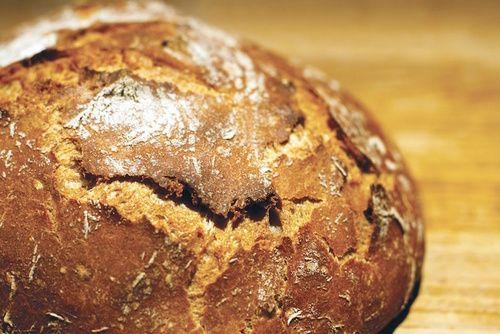, Naturopath
Spelled bread it is a food rich in proteins and vitamin B with a satiating and slightly laxative effect useful for fighting free radicals. Let's find out better.
> 1. Properties and benefits of spelled bread
> 2. Calories and nutritional values
> 3. Production of spelled bread
> 4. Spelled bread recipe

Properties and benefits of spelled bread
Spelled bread is rich in B vitamins and proteins. spelled bread has an amino acid deficient in other types of cereals, methionine.
This amino acid is involved in the synthesis of some phospholipids such as carnitine and cysteine. Spelled bread is suitable for those with digestive difficulties but not for celiacs as it has gluten. It contains important amounts of proteins and vitamins of group B.
Spelled-based products are particularly suitable for those who have digestive disorders and are intolerant to durum wheat derivatives.
For its high fiber content and for its ability to absorb water, spelled bread is suitable for slimming diets as it has a high satiating and laxative action.
Spelled bread has a high selenium content (antioxidant) which makes it a valid food to counteract free radicals. There are also potassium and phosphorus.
Calories and nutritional values
Spelled bread contains about 211 kcal per 100 g of product. It is particularly rich in protein (15,1 g / 100 grams of flour) and B vitamins. Spelled bread contains an essential amino acid that is missing or deficient in many other cereals: methionine.
Production of spelled bread
Spelled bread is made from spelled flour. Spelled, one of the oldest cereals known throughout history, it is a resistant wheat of the Graminaceae family that grows on poor soils, even with a harsh climate, unlike other more delicate cereals.
Spelled flour is the product obtained by grinding the kernels of Triticum spelta (or more spelled), Triticum dicoccum (spelled proper, or medium spelled) or Triticum monococcum (or small spelled).
Most spelled flours are made from greater spelled, which is less expensive and particularly versatile. Spelled, being precisely so resistant, does not require weeding or fertilization based on non-natural products, therefore it is generally a cereal that is generally "clean" of chemical substances.
Spelled bread recipe
Ingredients
- 300 g of spelled flour;
- 100 g of whole wheat flour;
- 2 g of brewer's yeast;
- 250 ml of warm water;
- 3 tablespoons of extra virgin olive oil;
- 1 tablespoon of fine salt.
Method
Dissolve the yeast in warm water. Mix the two flours also adding the salt. Add the water little by little, adding the oil as well. Knead everything until you get a soft and elastic dough.
Leave the loaf thus obtained to rest for about half an hour covered with a cloth. After the rising time, give the dough the shape of a round loaf that will rise for another hour.
Then divide the dough into cylindrical shaped blocks (incising the surface with small transversal cuts) and bake in a preheated oven at 200 ° C for about 40-50 minutes.
Properties and use of spelled flour


























